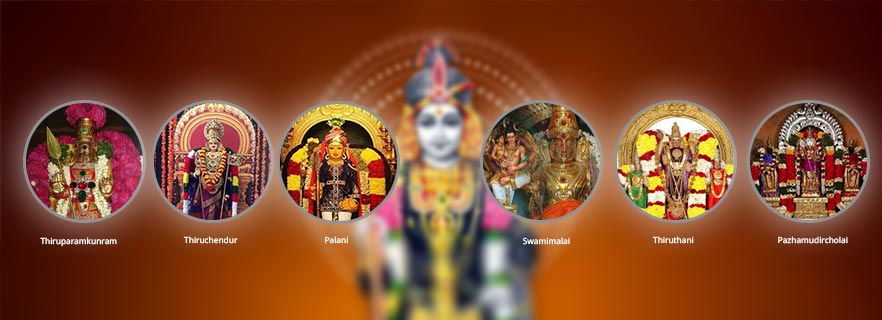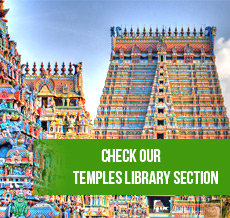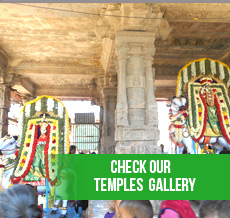
Six Abodes of Murugan (AaruPadai Veedu)
In Tamil Nadu, spread across the length and breadth of this southern state of India, are the six, stunning abodes of Lord Murugan, who is also popularly called as Muruga, Skanda, Kartikeya and Vadivela. Quite famous for their legacy, sanctity and architectural grandeur, these divine temples include Thirupparamkunram, Thiruchendur, Palani, Swamimalai, Thiruthani, and Pazhamudircholai. In fact, these beautiful holy abodes have found their way into the Tamil Sangam Literature, such as in the works of great Tamil poets Nakkeerar’s ‘Thirumurugatrupadai’ and saint Arunagirinathar’s ‘Thiruppugazh’.
Now let’s get down to explore in detail these six must-visit holy destinations which are known as ‘AaruPadai Veedu’
Palani
Thiru Avinankudi Temple or the Palani Temple as it is famously called is located nearly 1500 ft. above the sea level, this striking ancient temple gives a stunning panorama, overlooking the Palani town along with Kodaikanal Hills, Idumban Hill, the Western Ghats, lovely rivers, lush green paddy fields and some educational institutions nestled in between. From here, one can enjoy a fine view of the KurinjiAndavar Temple against the backdrop of the Sun on a clear day, when there is no mist. During the day, Palani is a mesmerising sight to behold with an expansive greenery spread all over while at night the entire hill lit up beautifully dotted with temple and town lights. The deity in this temple is called, Dandayudhapani Swami or the Lord holding a staff. The interesting thing about this sanctum is that the deity has been built of 9 minerals, popularly known as ‘Navapashanam’ and it was created by a yogi, Siddha Bogar, an ardent devotee of Lord Murugan. The deity is shown wearing only a loincloth and having a baton in hand – denoting a universal message to ‘renounce everything to reach the Lord’. While Murugan stands for beauty, the Lord of Kurinji is known for being the God of Youth and Beauty.
Swamimalai
This temple consists of 3 ‘Gopurams’ and 3 ‘Praharams’ (or Prahar). The southern side ‘Gopuram’ has five storeys and statutes all over it whereas there are no towers over the remaining two ‘Gopurams’. The Praharams have an interesting arrangement – the first one is located at the foothill, the second one is above, in the middle portion of the hill and the third one is at the top running around the temple. After entering through the ‘Raja Gopuram’ (main entrance) and the ‘KalyanaMandapam', one gets to visit the temple of Goddess Sakti along with other important shrines of different deities. There is a special well here called ‘VajraTeethra’. From here one can move upwards of the hill and half way up, there is an elevated area where you can find statues which boast of architectural grandeur, all portraying the legendary stories associated with the Swamimalai temple. After this, on the top you come across the next Praharam and beyond this level, further on top you will reach the main temple. On the first Praharam there are several other temples meant for different deities.
Thiruchendur
Thiruchendur Murugan Temple is located on the shores of Bay of Bengal. After defeating the demon Surapadma, the Lord came to this temple to worship Lord Shiva. Most of the temples in Tamil Nadua have the ‘Raja Gopuram’ or the principal entrance in the eastern side. But in this particular temple, the main entrance is in the western side. The reason being that the sea appeared too close in the eastern side and hence the entrance was not built here. The ‘Mela Gopuram’ is built with nine storeys which nearly 137 ft. high above Yalimattam, 65 ft. broad east to west and 90 ft. long north to south. The width of the Gopuram’s top is 20 ft. while the length is around 49 ft. In order to highlight the nine storeys there are 9Kalasams orholy copper pots over the Gopuram’s top.
Thirupparamkunram
Unlike other five temples where the Lord is seen in a standing position, here at Thirupparamkunram he is placed in a wedding setting, sitting along with Deivanai, his consort. On his sides, the Lord has Saraswathi the Goddess of Wisdom and Savithri while the Creator Brahma, the King of Devas Indira and Narada Muni stand as witnesses.Above the Lord, there are the Sun, the Moon and the celestial, skilled singers Gandharvas. The Lord’s vehicles the elephant and sheep are seen below. Since this temple is set in a cave, for safeguarding the natural elements the Lord is applied with ‘Punugu’ a special scented paste alone while only his weapon Vel is used for Abhishekam (the ritual of pouring or sprinkling holy water or any related substances). During the month of Purattasi (which falls between September and October), on the last Saturday, this Vel is then taken to the shrine of KasiViswanatha located in proximity on the hill. As a matter of fact, this temple is touted to be the only place where the Vel is conducted with an Abhishekam. The major significance of the Vel is that the Lord used this particular weapon to defeat a demon called Surapadma and after winning the battle he came to this temple. A beautiful gold chariot has been made exclusively for the temple in recent times. Devotees who are interested to be part of the annual procession – when Lord Murugan’s idol is taken into the gold chariot – should register well in advance.
Thiruthani
This is the fifth temple of Lord Murugan among his six army camp houses. The legend goes that the King of Gods Indra got his daughter married to Skanda (the other name of Murugan) and as a dowry presented the Lord with his white elephant, Airavatam. However, after Airavatam left, the wealth of Indra started waning. While Subramanyar was willing to return the elephant, Indra refused to have it back because he didn’t want to break the ritual of accepting his own gift. But, he put forth a suggestion that Airavatam must face his direction. That’s why the elephant’s image seen in this temple is facing the east.
Legend also has it that Vasuki, the King of Snakes, after worshipping Lord Murugan at Thanikai had his wounds healed. The wounds were inflicted on his body while he was used as a rope, by devas and demons to churn the Milky Ocean to obtain the Amrita (immortality nectar) while Mantotra mountain served as the base for churning.
Similar it is said that, at Tanikai, Sage Agasthiyar Muni worshipped the Lord, who blessed him with the gift of Tamil language.
Pazhamudircholai
The sixth and final temple of Lord Murugan is situated around 25 Kms, north of Madurai over a hill top and densely covered by forests. Story has it that Goddess Valli use to live among these in a shrine while there is a separate temple having the Lord Murugan, and Deivayani. Also here is a temple of Lord Ganesha. A temple tower is located here which is inhabited by playful monkeys.
Pazhamudircholai Murugan Temple lies in close proximity to the Vishnu shrine of AzhagarKovil. The shrine is accessible via two-wheeler, car, bus or van. In fact there is a facility for bus shuttle every twenty minutes from the foothill of this temple and it takes around fifteen minutes to reach it. The place is abundant of flowers, vegetables and fruits.
Above Pazhamudhircholai, there is a small shrine around which local tribes reside. It is a rich and fertile terrain comprising of various rare herbs as well as natural springs.
Arupadai Veedu Murugan Temples Tour by Templesyatra
One of the most opted south Indian temple tour packages, the ArupadaiVeedu Murugan shrines are a must-see. Given the fact, they all are rich in cultural legacy, architectural splendour and stunning sculptures, despite of having built thousands of years back.
We offer enriching information for Arupadai Veedu Murugan temples, which attract devotees from the length and breadth of the country as well as abroad. We also help with information regarding food and accommodation providers around these temples as well as tour operators who can help you in this travel.


